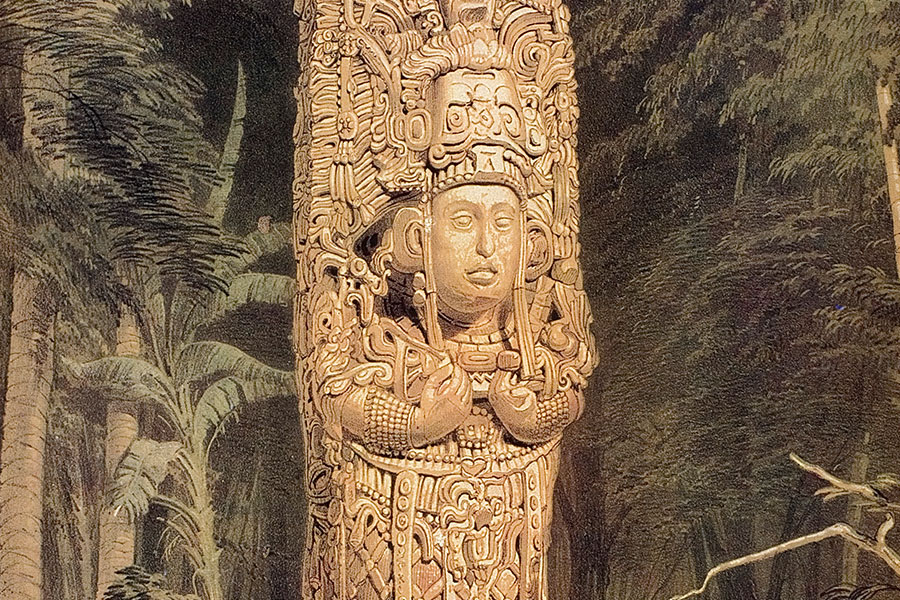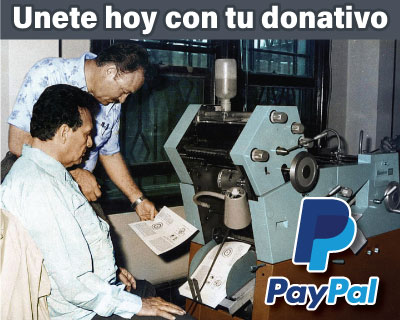Description of Stela E: The Alchemist's Work
It is very noteworthy that all the sculptures of Copán have the rod, the scepter, carved in the center. In Mexico, when sculptures have a carved scepter, they have it at the side or not at all. So, this is what makes remarkable the sculptures in Copán: they are clearly indicating that the power, the scepter, is located in the center.
On stela E, the inferior part of the rod is a little destroyed. Yet, on the superior part of the rod we notice an intercrossing of lines in a superpose way, having the shape of an X, which is profoundly significant in alchemy. The crossing of the mercury with the sulfur in order to perform the Great Work was known in the ancient Aztec as well as Mayan mysteries.
What is the Mercury of the Wise? Well, this is the metallic soul of the sacred sperm, the exiohehari.
The Stone of Mercury
This stone is very much destroyed, so it is a little difficult to study.
It has a human countenance.
The ears with big hoop earrings indicate the necessity of knowing how to listen, of knowing how to pay attention to wisdom.
The positive and negative forces, the mercury and sulfur of the great philosophers, are perfectly symbolized at each side.
Description of Stela 1: An Adept
The countenance is grave, with a resemblance of a beard.
The hands indicate the ascent of forces.
The belt is very well adorned on the part of Yesod and Hod. A face is shown on the part of the sexual organs; this represents the third force or Holy Spirit. From the kabbalistic point of view, we know that the two arms indicate Chesed and Geburah, Love and Law.
The scepter, although very much damaged, is always at the center. It indicates the work in the ninth sphere.
Description of Stela C: Stone of Self-realization
We see four faces in this stela, which is how the Tetragrammaton is represented.
The first face shows us Adi Buddha, the unknowable, the unmanifested, the one who does not enter into creation.
The second face is represented by the three forces—Father, Son and Holy Spirit—which do enter into creation.
Adi Buddha is the Father of our Father.
Jesus named him Yew, and he said of him, "the Father of my Father."
Yew, the unknowable, the unmanifested, never enters into manifestation.
Description of Stela N: Coatlicue
Ometecuhtli – Omecihuatl (Lord and Lady of duality)
Ome: two; tecuhtli: lord serpent.
Ome: two; cíhuatl: lady eagle.
The entire universe emanated from this masculine and feminine, dual principle.
Page 2 of 8
 English
English




